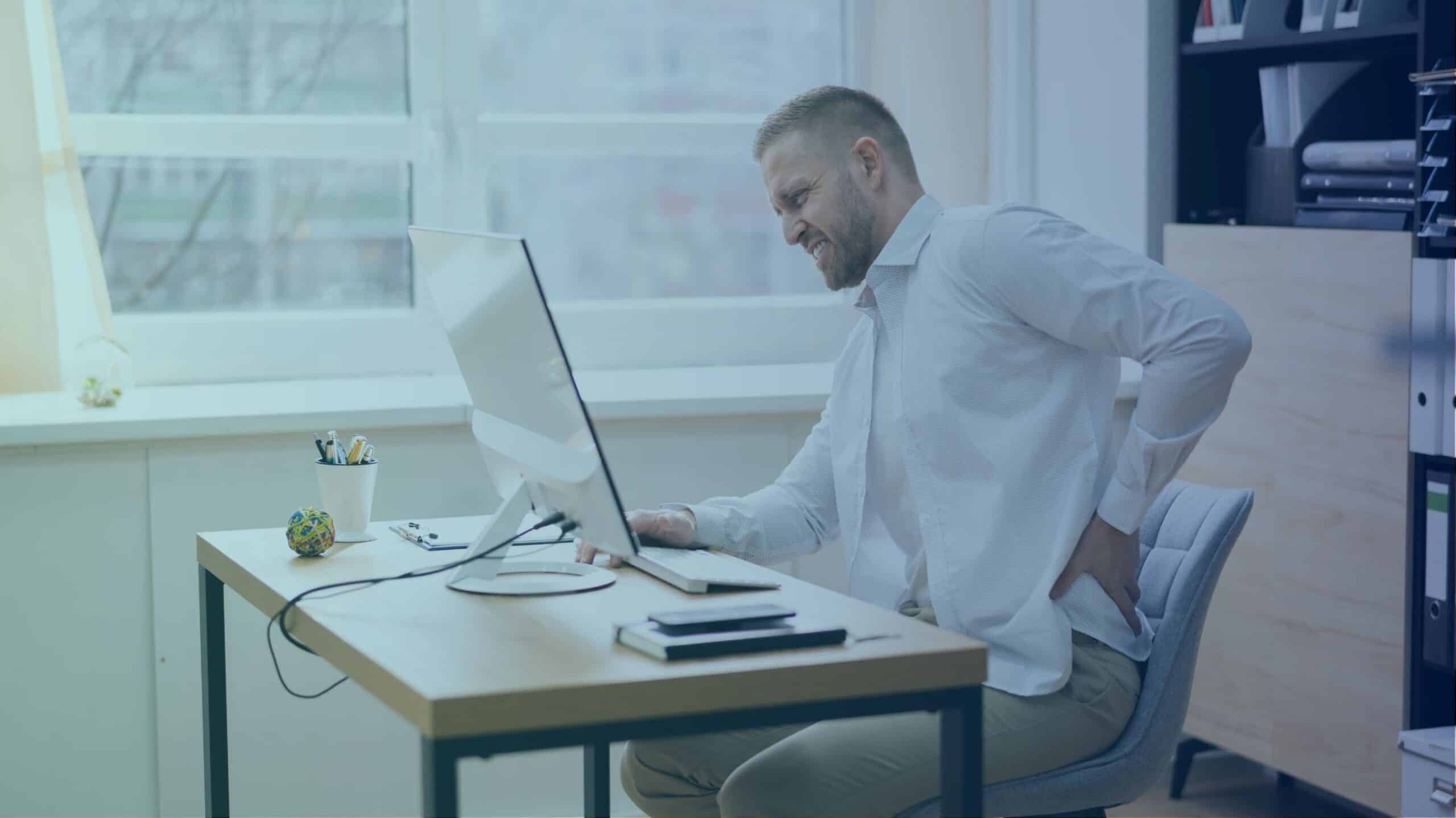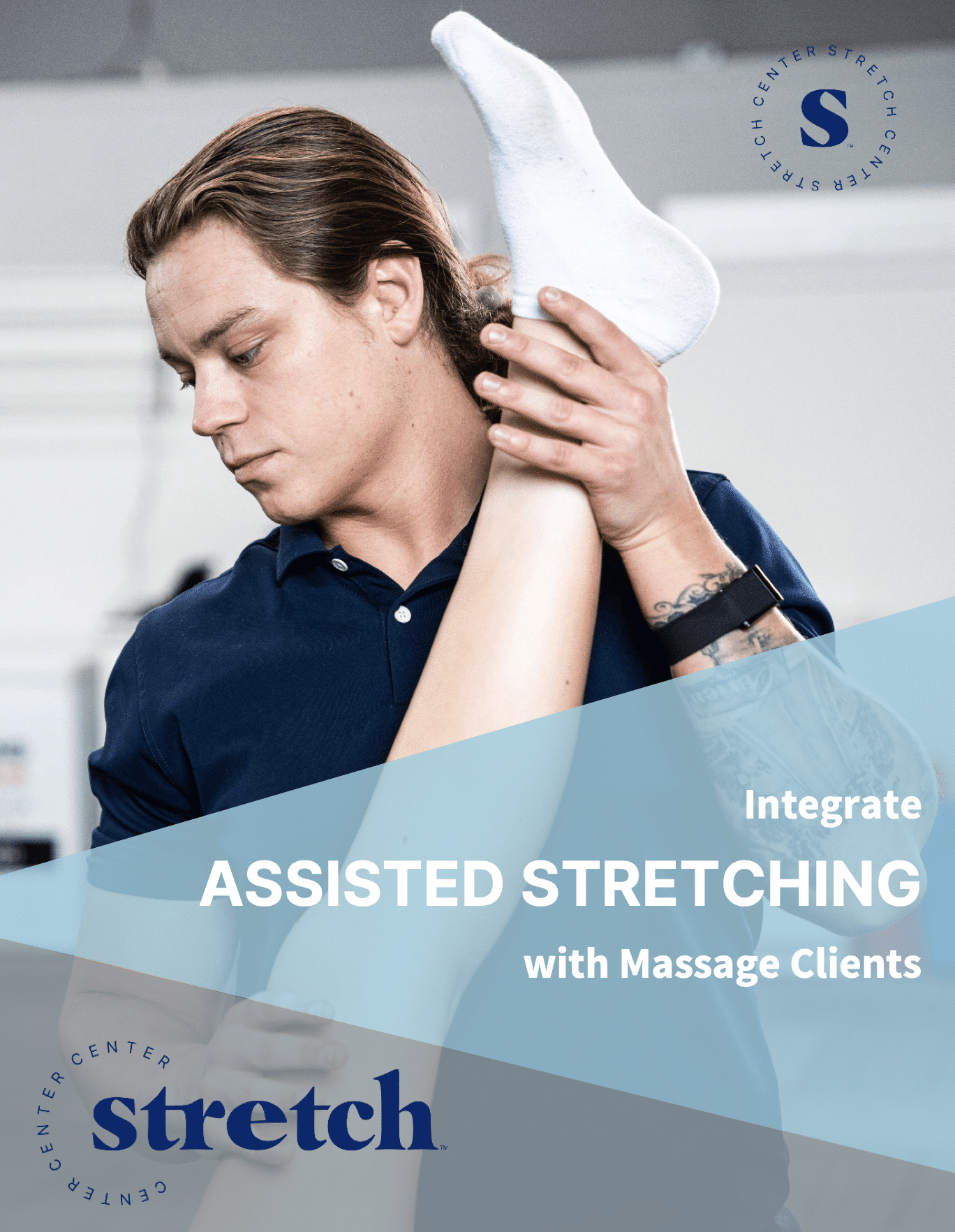Undoing the Effects of Desk Life
It is no secret that over the past few decades, the chances of one living a sedentary lifestyle have vastly increased. While there are many contributing factors to this, one main culprit persists: Long days at the office. In today’s workforce, more than 80% of jobs are sedentary, with office workers reporting that they often sit for over 10 hours a day. This level of inactivity has been linked to increased risk of cardiovascular disease, metabolic dysfunction, chronic pain, and other health complications. So, are you doomed to a life of immobility and increased health risks? Or is there a solution for you?
The Answer: Stretching.
Long hours at a desk often lead to anterior head carriage, rounded shoulders, tight hips, and stiff backs. Over time, this can reduce mobility, drain energy, and contribute to chronic pain patterns. As discussed in previous blogs, such as Upper Crossed and Lower Crossed Syndrome, we see that regular stretching—especially assisted stretching—helps reverse these imbalances by improving circulation, restoring range of motion, and promoting postural awareness.
Why Assisted Stretching Works Better Than Stretching Alone
Assisted Stretching offers deeper, more targeted benefits than self-stretching alone. It allows for full relaxation during lengthening, improves flexibility in stubborn areas, and provides nervous system downregulation, helping reduce mental and physical stress. For office workers, it means relief from back pain, neck tension, and postural fatigue. Best of all, Assisted Stretching performed by those certified with Stretch Center’s Assisted Stretching Course, are highly knowledgeable in what to target and capable of tailoring a custom stretching program that is right for you!
Key Overactive/Tight Muscle Groups to Target
- Neck – Anterior head carriage is typically accompanied by over facilitated neck extensors, levator scapulae, and upper trapezius muscles
- Chest and Shoulders – Rounded shoulders are typically accompanied by over facilitated pectoralis major/minor and anterior deltoids
- Hips and Quads – Constantly maintaining a seated position leads to persistent shortening of the iliopsoas and rectus femoris
- Glutes and Hamstrings – Inactivity can lead to stiffness in the glute med/min and biceps femoris
- Forearms and Wrists – Constant extension or flexion of the wrist without the use of an ergonomic keyboard and mouse can lead to stiffness in the extensor and flexor groups of the forearms
How Often Should Office Workers Stretch?
Self-stretching daily is ideal, but even once or twice a week of professionally Assisted Stretching (performed by those certified by Stretch Center) for just 25 to 55-minute sessions can have significant impact. Office workers benefit most from consistent sessions that retrain posture and relieve cumulative tension before it becomes a problem.
What to Expect in an Assisted Stretch Session
Your first session will include comprehensive analysis of your medical history and intake form, along with a Functional Movement Assessment! Your practitioner will guide you through stretches that target your most restricted areas, adjusting intensity as needed. Sessions are designed to be deeply relaxing, similar to a massage experience, but with movement-focused intent. This allows you to relax into each stretch and provides a sense of relief and mobility you may not have realized you were missing.
Final Takeaways
You can’t always change your job—but you can change how your body adapts to it. Assisted Stretching offers a powerful tool to combat the daily strain of desk life, leaving you feeling looser, lighter, and more focused.
Ready to move better, sit taller, and feel less stiff? Consider trying Assisted Stretching as part of your weekly wellness routine.
Are you a Personal Trainer or Massage Therapist looking to provide these services to your existing client base or gain CEUs with ISSA, ACE, NASM, AFAA, NCBTMB, or NPCP? Head to stretchcenter.com/certification to get started!





